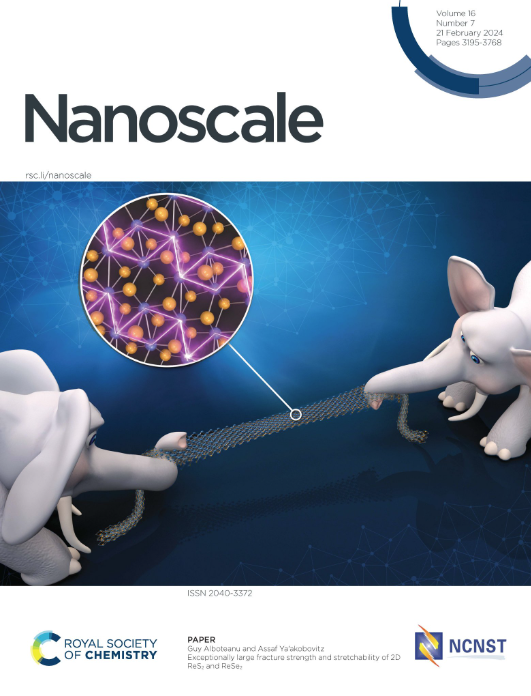Lattice stability and elastic evolution of CdTe membranes fabrication using a III-V heterostructures as a substrate
IF 5.8
3区 材料科学
Q1 CHEMISTRY, MULTIDISCIPLINARY
引用次数: 0
Abstract
CdTe is a key binary compound for II-VI semiconductor systems since the precise control of its growth over different semiconductor materials of different orientations provides a general roadmap for telluride compounds, ranging from optically active layers to diluted magnetic semiconductors and topological insulators. The precise understanding of its epitaxy, film orientation and built-in strain is crucial for II-VI layer integration with commercial hosting substrates used for the latest semiconductor process nodes such as Si and GaAs. In this work, we show that it is feasible to use CdTe:GaAs/InGaAs/GaAs released membranes yielding high-quality crystalline layers. A combination of Raman scattering and X-ray diffraction results provide a concise scenario of evolution along different growth stages. Surface roughness and contact potential are evaluated by atomic force and Kelvin-probe microscopy, respectively. The coexistence of faceting types (001) and (111) becomes clear using AFM and KPFM near the edge of a CdTe membrane. At such edges the local cleavage of the membrane is probed, exposing several layer steps and reflecting the growth history of CdTe. In this condition, KPFM clearly differentiates faceting (throughout contact potential difference) more accurately than height profiles, allowing a qualitative explanation of the nucleation evolution in our system. Finally, the occurrence of a 4% in-plane interfacial compressive strain is observed by nanomembrane release and modelling with finite element methods. The results showing the flexibility of high-quality CdTe layers here can improve optoelectronic integration of II-VI semiconductors.以III-V异质结构为衬底制备CdTe膜的晶格稳定性和弹性演化
CdTe是II-VI半导体体系的关键二元化合物,因为精确控制其在不同取向的不同半导体材料上的生长为碲化物化合物提供了一个总体路线图,范围从光活性层到稀释磁性半导体和拓扑绝缘体。精确理解其外延、薄膜取向和内置应变对于II-VI层与用于最新半导体工艺节点(如Si和GaAs)的商业托管衬底集成至关重要。在这项工作中,我们证明了使用CdTe:GaAs/InGaAs/GaAs释放膜产生高质量晶体层是可行的。拉曼散射和x射线衍射结果的结合提供了沿不同生长阶段的演化的简明场景。表面粗糙度和接触电位分别用原子力和开尔文探针显微镜评估。使用靠近CdTe膜边缘的AFM和KPFM,可以清楚地看到饰面类型(001)和(111)的共存。在这些边缘处,探测到膜的局部切割,暴露出几个层步骤,反映了CdTe的生长历史。在这种情况下,KPFM比高度剖面更准确地区分面形(通过接触电位差),从而可以定性地解释我们系统中的成核演化。最后,通过纳米膜释放和有限元模拟,观察了4%面内界面压缩应变的发生。结果表明,高质量CdTe层的灵活性可以提高II-VI半导体的光电集成。
本文章由计算机程序翻译,如有差异,请以英文原文为准。
求助全文
约1分钟内获得全文
求助全文
来源期刊

Nanoscale
CHEMISTRY, MULTIDISCIPLINARY-NANOSCIENCE & NANOTECHNOLOGY
CiteScore
12.10
自引率
3.00%
发文量
1628
审稿时长
1.6 months
期刊介绍:
Nanoscale is a high-impact international journal, publishing high-quality research across nanoscience and nanotechnology. Nanoscale publishes a full mix of research articles on experimental and theoretical work, including reviews, communications, and full papers.Highly interdisciplinary, this journal appeals to scientists, researchers and professionals interested in nanoscience and nanotechnology, quantum materials and quantum technology, including the areas of physics, chemistry, biology, medicine, materials, energy/environment, information technology, detection science, healthcare and drug discovery, and electronics.
 求助内容:
求助内容: 应助结果提醒方式:
应助结果提醒方式:


